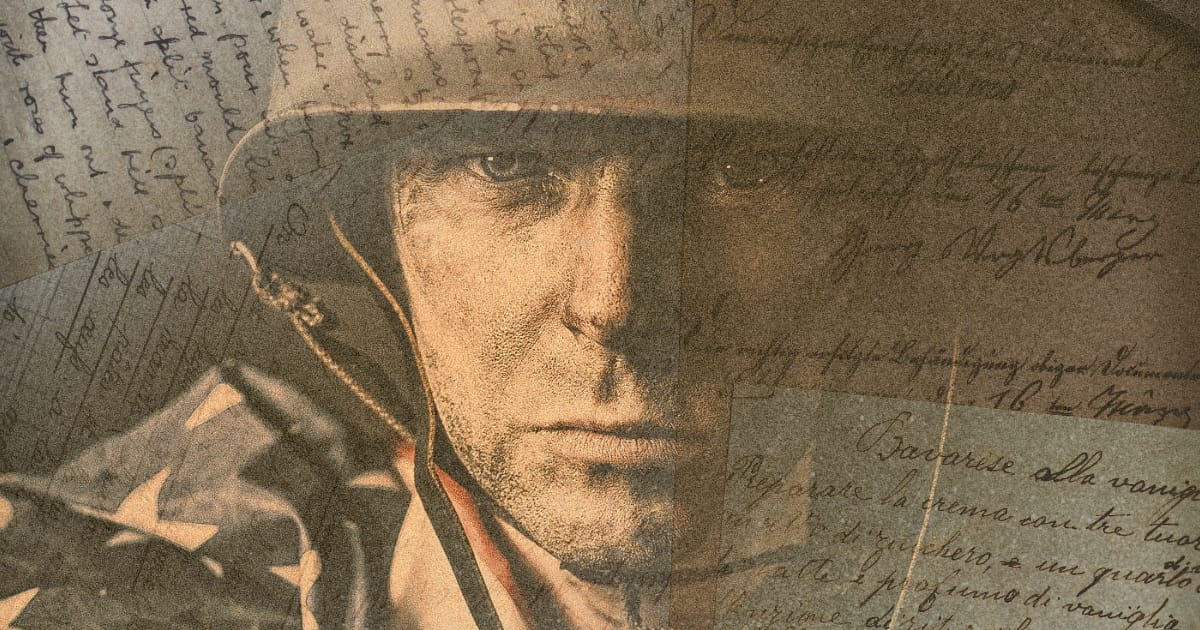
War and Love Letters: Valentine’s Day During WWII
The shadow of World War II loomed large over the 1940s, and as millions of soldiers were sent to battlefields across the world, love took on a deeper, more poignant meaning. Valentine’s Day during this time was not about grand parties or public displays of affection. Instead, it became a personal, intimate celebration of love, one that could survive miles of separation, dangerous missions, and the fear of an uncertain future. Handwritten letters, carefully crafted poems, and handmade gifts became the symbols of devotion, and each Valentine’s Day carried with it the hope of a reunion, a promise of love that could endure even in the most challenging of times.
The Power of Letters in Wartime
As soldiers and their loved ones faced prolonged separations, the act of writing letters became not only a lifeline but also a means of preserving love. Valentine’s Day letters sent from the frontlines were often the only way soldiers could stay connected to those they held dear. These letters became treasures, holding within them not only declarations of love but also personal experiences, hopes for the future, and reassurances that love would survive the war.
In an era before emails, texts, and video calls, a handwritten letter was often the only communication between loved ones during long periods of separation. For couples, receiving a letter on Valentine’s Day was a cherished event, an emotional balm to the anxiety and loneliness of wartime. Letters were often filled with romantic poetry, sweet nothings, and hopeful promises of reunions after the war. For many, these letters became the heart and soul of their relationships, and Valentine’s Day was the perfect occasion to express those emotions.
The famous British singer Vera Lynn captured the emotions of wartime separation with her hauntingly beautiful song “We’ll Meet Again” (1939). The song became an anthem for soldiers and their families, expressing both the longing for reunion and the hope that love would triumph over the ravages of war. The lyrics, “We’ll meet again, don’t know where, don’t know when,” became a mantra for lovers separated by the war, symbolizing both the pain of parting and the belief in eventual reunion.
Handmade Gifts: Tokens of Love Amidst the Chaos
While soldiers were fighting on distant shores, those at home were finding creative ways to keep the spirit of Valentine’s Day alive. In the absence of extravagant gifts and celebrations, people turned to handmade tokens to express their love. Cards were often crafted from paper, decorated with hand-drawn hearts and flowers, or inscribed with handwritten messages. Lovers would often make knitted scarves, crocheted handkerchiefs, or personalized scrapbooks to send to their sweethearts, knowing that these small gestures would carry great emotional weight.
For many families, Valentine’s Day was a quiet affair. Rather than lavish dinners or expensive presents, it was a time to exchange simple but deeply meaningful gifts. The acts of creativity and care that went into creating these tokens were a testament to the resilience of love, which was not easily shaken by the horrors of war.
The Heartache of Separation
During the war, Valentine’s Day was often a bittersweet occasion. For soldiers, especially those deployed overseas, the day was a reminder of everything they had left behind—family, friends, and loved ones. Many couples could not be together, and the absence of their partner was felt more acutely on this day. Valentine’s Day became a symbol of both love and the painful reality of separation.
For those at home, the day was filled with worry and uncertainty. They longed for a reunion but feared the worst. Couples sent each other Valentine’s Day cards, hoping to reassure each other of their enduring love. But the possibility of loss always hung in the air. Yet, despite the grim realities of war, these expressions of love became all the more powerful.
Wartime Romance: The Story of Ordinary Heroes
In the midst of the devastation, stories of wartime romance flourished. The letters exchanged between soldiers and their sweethearts often told tales of quiet heroism, resilience, and undying devotion. Many couples maintained their bond through their letters, building an emotional intimacy that transcended the physical distance between them. The letters often described the small moments of life, from the mundane routines of military life to the joys of receiving a letter from home.
Perhaps one of the most famous love stories of this era is the correspondence between A.P. Herbert, a British soldier, and his fiancée, who later became his wife. Their wartime letters were filled with expressions of deep affection and mutual support, and their relationship survived the war’s many challenges. Their story, along with countless others, illustrated the enduring power of love during one of the darkest times in human history.
Valentine’s Day and Wartime Propaganda
Interestingly, Valentine’s Day also played a role in wartime propaganda. Governments sought to boost morale both on the frontlines and at home, and messages of love and devotion were used to encourage soldiers to continue fighting. On Valentine’s Day, propaganda posters would feature messages like “Send a kiss to your sweetheart” or “Every soldier’s love letter is important to the home front.” These slogans reminded citizens of the emotional connections they were fighting for, reinforcing the link between love and patriotism.
Famous Line of the Era
“We’ll meet again, don’t know where, don’t know when.” – Vera Lynn, a song that captured the longing and hope for reunion during wartime.
Check our exclusive valentine special digital products: https://quantumdot.online/shop/
